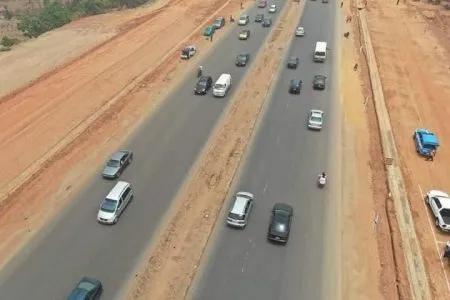I love acting. It is not just a pastime but was my greatest desire while growing up. That desire led me to seek admission at the University of Jos (UNIJOS) to study Theatre Arts but was denied admission for reasons I found very opaque despite explanations by the then head of the department.
When destiny took me to the University of Lagos (UNILAG), Akoka to study History, I stubbornly ended up as one of the founders of the famous Theatre15 where I found a platform to express my artistic gifts as an actor and artistic director during my undergraduate studies. Professor Hope Eghagha and Professor Segun Adewuyi were my tutors.
That was how I ended with numerous appearances with a grand finale as Sizwe in Sizwe Bansi is Dead by Athol Fugard. One of my late professors in the Department of English in his review, described our performance as the best he had seen by a group of amateurs. He rated it better than performance in the United Kingdom (UK) by professionals.
Till date, I humble myself with his review and therefore regard my last stage performance as my best ever. For those who may not have seen or read the book, it is a political satire written by Fugard alongside two other South African actors: John Kani and Winston Ntshona. Both appeared in the original production and world premiere on October 8, 1972, in Cape Town, South Africa, my favourite city in South Africa.
Like I said, it was my best and last stage performance before graduating from the prestigious University of Lagos. Besides acting, I am also a film buff or a cinephile. My passion for acting and movies is deadly. Yet despite this love or craze, I have never loved Mexican drama for reasons best known to me. However, the bug of the soap, “The rich also cry,’’ caught my attention till date.
I am not about to give you a snippet of this soap but to tell you that it is an app title for me as we brace up for government numerous reforms meant to reposition our economy for good. Although I am not rich, but as a retired officer, the look on my face speaks volume when I do the following; buy petrol for my car, recharge my electricity card so as to enjoy Band A as well as when I am done restocking foodstuff at home.
For anyone in my position who attempts to do these three on the same day, only God will prevent you from developing a driving disease called road rage. Recently, I have been bugged by one that has been trending and shared by friends and colleagues. I must confess that I rank the clip as one of the worst cases that I have watched as I couldn’t explain the level of insanity displayed by the raging driver who in a Rambo-driving style dared anyone or crush them.
I am today compelled to focus on this subject matter. Let us start with road rage. It is a term that describes aggressive and dangerous driving behaviours and has become a daily occurrence in our clime, the United States of America and across a handful of developed countries.
Our operatives in the Federal Road Safety Corps have become victims of such incidents in the course of their legitimate duties. I know that times are quite challenging and pave the way for such negative behaviours but there are specific steps that we can take to mitigate the effects of rage incidents.
Before we dwell on that, you must know that aggressive or angry behaviour includes rude and verbal insults, yelling, physical threats or dangerous driving methods targeted at other drivers, as well as other road users such as pedestrians and cyclists as a way to intimidate them or release frustration.
Let us now look at the causes of road rage. In one of the resources I stumbled on, the most common reason cited by aggressive drivers responsible for aggressive driving and road rage is heavy traffic. This factor could be reinforced by existing stressed conditions, running late to work or an appointment, already feeling angry before setting out of their homes as well as feeling tired.
In our clime, I cited the incidents that could aggravate aggression. There might be others but these are the most common that drivers confess to. For factors that increase the risk of road rage, available studies show that age, time of the day/year as well as type of car are common. I guess they forgot to mention that your status as an employed or unemployed could increase the risk also.
Before I bore you with these details, let me share a personal experience that had the potential of driving a friend into aggressive driving. This friend named Kunle narrated how after spending over N200,000 to fix his car, the mechanic failed to deliver after 10 days and when he did, the job was so badly done and annoying, that he confessed that he could have shot the mechanic if he had a gun. Such a person, if driving, is a potential rage driver.
Now to the studies which reveal that drivers aged 19 and below are more than four times more likely to be involved in aggressive driving than older drivers. It goes further to say that road rage tends to occur more in summer months and towards the end of the week in developed clime. It also says that there is the prevalence of angry drivers during peak commute hours or school run hours.
In the words of another friend named Izuchukwu, in our clime, this could be prevalent during December for the Christmas season if there is no cash to visit loved ones, the month of September just before school’s demand for new and increased school fees among others. These driving behaviours may take the form of tailgating, honking, cutting people off, or making rude gestures, especially when they believe they may never see the person again.
It is therefore crucial that we drive to avoid rage incidents by driving with courtesy, respect and patience. These three driving virtues have the potential of dousing even the worst incidents before they occur. To achieve this, you will need to play your driving lessons and tips by recalling your defensive driving techniques notes.
The notes require you to maintain a safe distance and avoid tailgating, use turn signals to avoid cutting off other drivers, use your horn responsibly and avoid blaring it unnecessarily, avoid flashing high beams at others and be considerate, careful and cautious in parking lots or even at malls.
According to experts where this fails, avoid making eye contact with reckless and upset drivers, don’t escalate aggression with aggression, if you feel endangered, navigate to a public place such as a police station, fire station, hospital, and don’t hesitate to call an emergency number but please remain calm always.




